The Georgian city of Mtskheta was founded in the 5th century BC. The area around is picturesque: the city is located at the confluence of two rivers and surrounded by mountains. Many legends and myths are associated with these regions. There were also events that changed the course of history.
In addition to natural beauties, Mtskheta has collected architectural and cultural sights from different eras. Among them are active and abandoned temples, the ruins of an ancient city, monasteries and even a fortress, which in former times had strategic importance.
From the hills there are wonderful panoramic views. There are few roads, but they can be used to get to any object of interest to tourists. You won't be able to get lost here, and the locals will gladly show you the right path.
What to see and where to go in Mtskheta?
The most interesting and beautiful places for walking. Photos and a short description.
Jvari
The current temple, founded in the VI century. It is built on top of a mountain near the confluence of two rivers: Kura and Aragvi. The small walls around, as well as the towers, are now in ruins. It is believed that the events of Lermontov's "Mtsyri" took place here. There are many interesting details in the architecture of the surviving buildings, for example, special arches - tromps. Jvari went through restoration at the end of the 2000s, as it was on the verge of destruction.
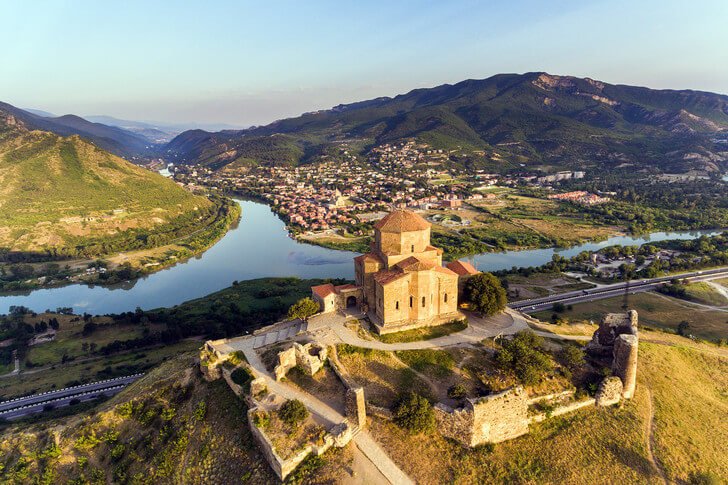
Svetitskhoveli Cathedral
Founded in the 11th century, dedicated to 12 apostles. For a long time it was the main temple of Georgia. It served as the coronation place for the kings of the Bagration dynasty. Here they were buried. The original painting of the interior walls has not been preserved. The most memorable frescoes of the existing ones date back to the 17th century. The belfry and gates are an example of folk Georgian architecture. In 1994, the cathedral will receive the status of a World Heritage Site.
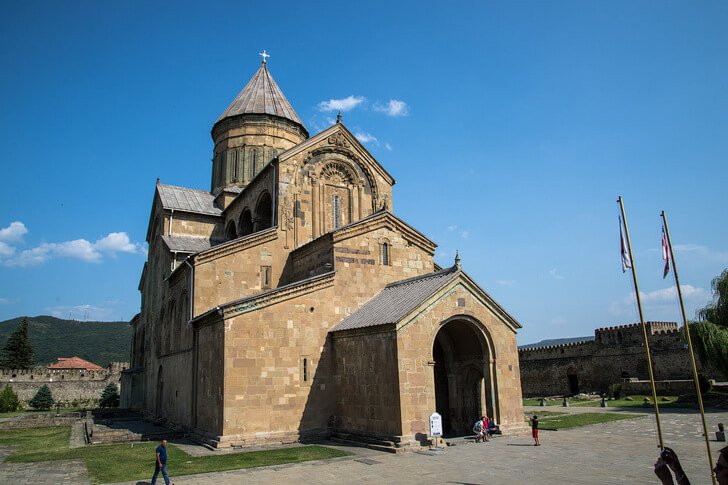
Monastery Samtavro
The first church buildings appeared on the site of the current monastery in the 4th century. Now the complex consists of the convent of St. Nina and the Samtavro-Transfiguration Church. The temple and surrounding areas often changed their appearance. A major restructuring took place in the 11th century: the expansion of the internal space, the appearance of the southern gate and ornamentation. Special values: the miraculous icon of St. Nina, the relics of saints, the graves of kings.
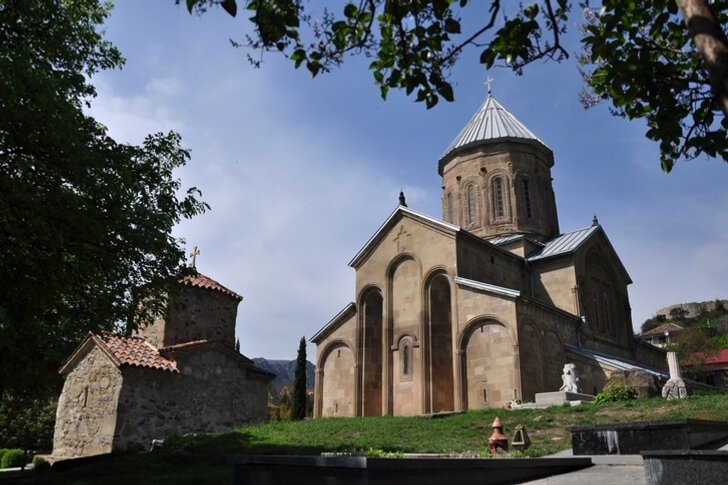
Bebristsikhe fortress
It is located on the right bank of the Aragvi. The exact date of foundation is unknown. The earliest buildings appeared here in the 1st century BC. e. The original purpose is protection from mountain tribes. It is the place of death of Demeter I - the king from the Bagration family. At the moment, the fortress is in a ruined state. Fragments of the wall and a number of fortifications, as well as part of the citadel, remained relatively intact.

Church of Antioch
Another name is the Church of St. Stephen. It was built in the 4th-5th centuries near the confluence of the Aragvi and Kura. It was erected as a sign of gratitude to the Almighty for getting rid of the Persian aggressors. In the VIII century it was destroyed and restored only after almost a thousand years. Its dimensions have become more modest. From the outside, the building looks abandoned, but inside there are fresh frescoes. Refers to the territory of the convent.
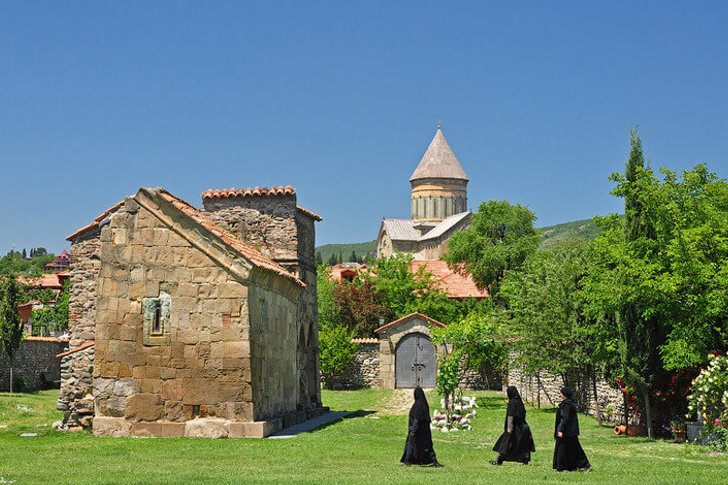
Shio-Mgvime Monastery
Built after 560, 9 km from the city. The road leads to it - the only one in the vicinity. Named after the founder - one of the Assyrian fathers. For three centuries the monastery was patronized by the princes Amilakhvari, who were buried nearby. The monastery was the largest and most famous in Georgia. Its first building is the Church of John the Baptist. There are other buildings, as well as a well and a bell tower. On the cliffs there are caves.

Zedazen Monastery
Founded in the VI century by one of the Assyrian fathers - John. It is located on a mountain, so it offers a picturesque view of the panorama of the city of Mtskheta, as well as the Jvari Monastery. The monastery was devastated in the 17th century and since then has not returned to its former way of life. At the moment it has the status of an architectural monument. Nearby is a holy spring, the water from which is considered healing.

Ancient city of Armazi
An ancient settlement, the ruins of which can be found opposite Mtskheta. Approximate time of destruction - VIII century. Archaeological excavations were carried out, the foundations of temples, both pagan and Christian, were found. Until 2012, when the area was cleared, the ruins did not attract tourists. Equipped with an observation deck. Among other things, some columns, the outlines of halls, a wine storage, and the ruins of baths have been preserved.

Pompeii bridge
Located on the outskirts of the city. Built around 65 BC. It was used to cross the Kura until the middle of the last century. It was badly damaged when a hydroelectric power station was built on the river. The water level rose, and part of the stone structure was inaccessible. The construction of the bridge is quite complex, which is why it is so well preserved. However, restructuring also happened. The cracks are filled with lead, there are concrete inserts.
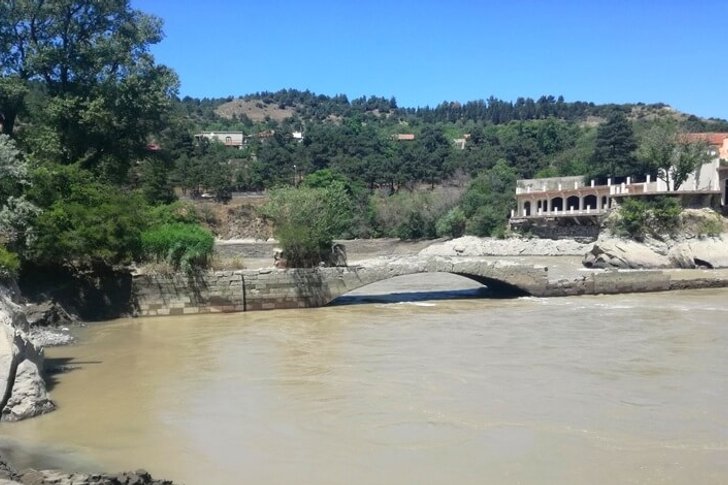
Kura and Aragvi rivers
They flow in the east of Georgia. Aragvi, which has a length of 66 km, is a tributary of the Kura, the length of which is 1364 km. At the place of their confluence stands the city of Mtskheta. A legend about the love of two sisters for one young man is connected with the emergence of Aragvi. The death of the heroes of the myth gave rise to a branched river. Kura is navigable by a third. Fishing is carried out here. Large cities were founded along the banks, including Tbilisi.
